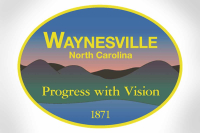The goose won’t keep laying golden eggs without proper care
By Lee Shelton
The town limits of Maggie Valley encompass only 1.8 square miles, and there is only one commercial strip, which also serves as the sole access road for many of the residents in the area. It is also a U.S. highway. Even with adding in the Extra Territorial Jurisdiction (ETJ) together with the incorporated limits, 83 percent of what is identified as Maggie Valley falls outside that area. Thus, there are a lot of folks affected by actions taking place in the very small incorporated area of Maggie Valley.
The town has approximately 600 residents, but “greater” Maggie Valley has more than 6,000.
The final Maggie Valley Plan Document should be considered in this context. Following are some important excerpts:
• “Maggie Valley is clearly a preferred location for second-home owners, particularly for residents living in Florida. This fact has important economic and fiscal implications for the town, and local officials must be careful not to kill the goose that lays the golden egg.”
• “Maggie Valley public policies should reflect ... a sense of community for both permanent and part-time residents.”
Related Items
• “... Does the town want to nurture a community image based primarily on economic (strip development along U.S. 19), or does it want to nurture a community image that incorporates a more holistic community based on distinctive physiography? Examining this phenomenon from another perspective, if residents in the larger community identify their housing as part of the greater Maggie Valley community, shouldn’t public policy attempt to narrow the gap between public perceptions and legal realty?”
It was noted that approximately 50 percent of the Maggie Valley property tax receipts are residential.
The three short paragraphs above are very important in framing this issue. They should be cause for careful deliberation and consideration. Either the leaders embrace the plan, or they don’t. They can’t have it both ways.
Also quoting from the plan document: “Even within the town, less than 50 percent of the property owners have the Maggie Valley zip code. Fifteen to 35 percent of the property owners reside elsewhere in North Carolina ... ; 26 to 33 percent of the property owners reside in Florida; and 3 to 6 percent of the property owners reside in South Carolina, with Georgia, Tennessee and Virginia accounting for a small percentage of owners.
“Absentee land ownership accounts for over 50 percent of all properties within the town, the Extra Territorial Jurisdiction (ETJ), and the remainder of the (planning) project area of 20,975 acres (32.8 square miles). The incorporated areas and the ETJ account for only 17 percent of the total subject land area normally referred to Maggie Valley.”
I consider that I live in Maggie Valley, but I don’t live in the incorporated town limits or ETJ — however, I am less than a mile from Soco Road. Maggie Valley is my home. Also through public images, and in reality, Maggie Valley is most often viewed as this extended area identified in the Maggie Valley planning exercise — not just the incorporated town limits or the ETJ.
In terms of being careful not to kill the goose that lays the golden egg, it should be noted that the second/seasonal population is growing at a rate greater than permanent population, and the permanent residents moving in have many of the same characteristics as the seasonal residents — in fact, many were previously seasonal residents. This population is driving growth in the construction sector (which has one of the highest economic multipliers), health sector, recreation, arts, and demand for goods and services.
Deaths have exceeded births in each of the last 20 years in Haywood. Further, there has been a migration out of 18- to 27-year-olds (for education, the military, pursuit of new experiences, pursuit a career, etc). Thus, there has been negative intra-county population growth for two decades.
From 1920 to 2000, the total net population in the county increased by 30,537, which averages to a net increase of only 381 net new residents per year. The “permanent” population has only increased by approximately 30,500 in 80 years, with 7,000 coming between 1990 and 2000.
If you just consider the growth from 1990 to 2000, when the county experienced a 15.1 percent growth rate, this was still just 701 new residents per year. The increases are misleading, as the intra-county population is decreasing and the new inward migrants are both offsetting the decrease in intra-county population and also producing the net increase. Thus, there are more inward migrants than the net population growth data reflects. Then you have to consider the seasonal residents on top of this inward migration.
The growth — fueling economic growth — has come from the seasonal/second-home sector, who pay the same rates for property taxes, fire district, land fill, etc. as the permanent residents. They don’t have children in local school but their taxes provide for the schools. Their taxes (including the sales taxes on their local purchases) significantly supported the new county Justice Center and Law Enforcement Center, although few will ever be users of either. The higher-end neighborhoods in Haywood County — and in the Maggie Valley area — have a preponderance of seasonal homes.
Without these seasonal/second-home residents, the local economy would be in a world of hurt. That is the goose that Garry Cooper was referring to in the Maggie Valley Plan. They are the ones, arguably, that are primarily floating the local economy’s boat. The counsel of Garry Cooper for an inclusive public policy should be the path to take for the county and all the municipalities. Seasonal residents (and those who don’t live in a municipality or ETJ) may not be able to serve on boards and commissions, but they could serve on standing and ad hoc advisory committees. Area leaders should include these folks and their perspectives in creating public policy. To leave them out is a big mistake.









